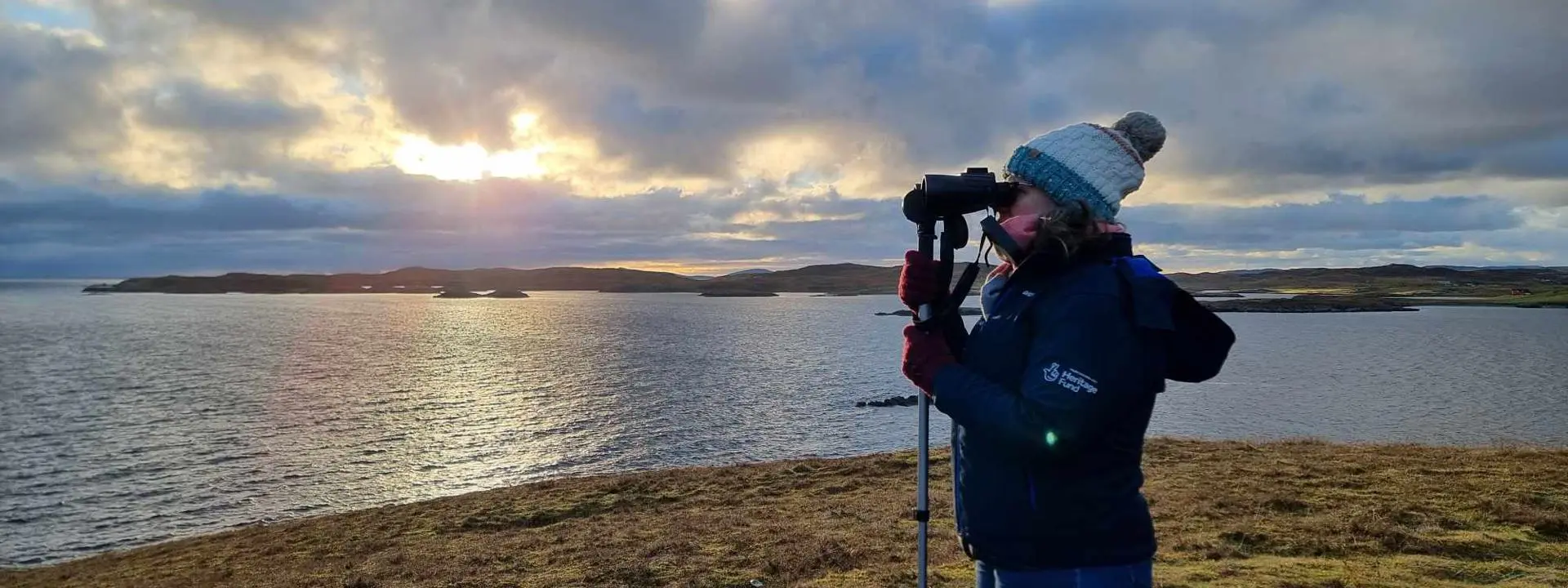Over half of Scotland’s coastal vessels go untracked, study finds

Over half of vessels operating in Scotland’s coastal waters are effectively “invisible” to standard maritime tracking systems, according to a new Heriot-Watt study.
The researchers found that only 43% of vessels within 10 km of the Scottish coast broadcast an Automatic Identification System (AIS) signal, the standard global tool to monitor ship movements.
The Heriot-Watt team says this lack of visibility poses significant risks to marine life, safety, and sustainable ocean management.
Citizen scientists from Shetland to Arran took part
The study, which relied on over 1800 hours of land and sea surveys conducted between 2019 and 2024, covered nine of Scotland’s 11 marine regions and showed huge regional and seasonal disparities in AIS visibility.
It was published in the academic journal Marine Policy.
Much of the data was collected by citizen scientists from several organisations; volunteers were trained to follow a standardised method to survey and quantify ships.
Volunteers from the Whale and Dolphin Conservation Shorewatch in Shetland, the Hebridean Whale and Dolphin Trust and the Community of Arran Seabed Trust all participated.
Dr Emily Hague from Heriot-Watt’s School of Energy, Geoscience, Infrastructure and Society said: “This data challenges the assumption that we can rely on AIS to tell us what’s really happening in our coastal seas.
“In some areas, over 75% of vessel activity goes unrecorded.”
Scotland’s regions tell different stories
The study highlighted significant regional variations. In the Outer Hebrides, only 20% of vessels observed were transmitting AIS data, despite the area being a hotspot for ecotourism, fishing, and aquaculture.
The Orkney Islands showed a higher rate, with 58% of vessels broadcasting.
In the Forth and Tay, home to some of Scotland’s busiest ports, AIS coverage reflected true traffic only 8% of the time, raising questions about under-represented commercial and recreational traffic.
Smaller vessels, such as fishing boats under 15m, recreational craft, and jet skis, accounted for much of the missing data. They are not legally required to carry AIS, but could voluntarily install and broadcast data.
Accurate data essential to gauge impact on Scotland’s marine life
Dr Hague said: “AIS data is used by governments, conservation bodies and researchers to model vessel-related impacts such as underwater noise pollution, whale and dolphin collision risk, anchor damage to the seabed, greenhouse gas emissions and climate impact.
“But if over half of vessel movements in inshore waters are missing, existing models may be severely underestimating these impacts. This could lead to inadequate management, conservation and safety policies."
Dr Lauren McWhinnie said: “Scotland’s coasts are a vital habitat for species like bottlenose dolphins, minke whales and orca. Without accurate data, it’s difficult to assess and mitigate threats to these species.”
Coastal communities would benefit from better data
The research doesn’t just highlight a gap—it offers a path forward. The authors suggest that where there are high volumes of non-AIS vessels, AIS data should be supplemented with other tracking methods, such as land-based observations and citizen science, to build a complete picture.
Dr McWhinnie said: “Ideally, even smaller vessels would broadcast their position using AIS.
“Improving data will benefit coastal communities, providing information that will allow them to balance tourism and other vessel-based activities with local sustainability and environmental objectives.
“It will also enable researchers and conservation groups to provide better evidence when it comes to measures for protecting marine life.
“With an improved understanding of the activities and movement of different types of vessels, marine planners and policymakers could tailor regulations to maximise their potential effectiveness.
“The wider maritime sector could further benefit through improved safety and awareness.”
Carole Davis, a volunteer for WDC Shorewatch in Shetland, said: “I was pleased to be involved with this research, as I thought that the additional data obtained would hopefully provide more detailed information on the potential impact of vessels and would help to increase awareness of the importance of citizen scientists in marine research.”
Navigating blind
The study recommends applying correction factors when using AIS to model coastal impacts, taking into account local vessel type, region, and season.
Until universal tracking is possible, the researchers argue, such adjustments are crucial to avoid blind spots in maritime governance and any AIS-based risk assessments.
Dr Emily Hague said: “We need transparency at sea. Scotland’s blue spaces are getting busier, and without better data, we’re navigating blind when it comes to understanding the potential impacts.”
Find out more about the Scottish Vessel Project.